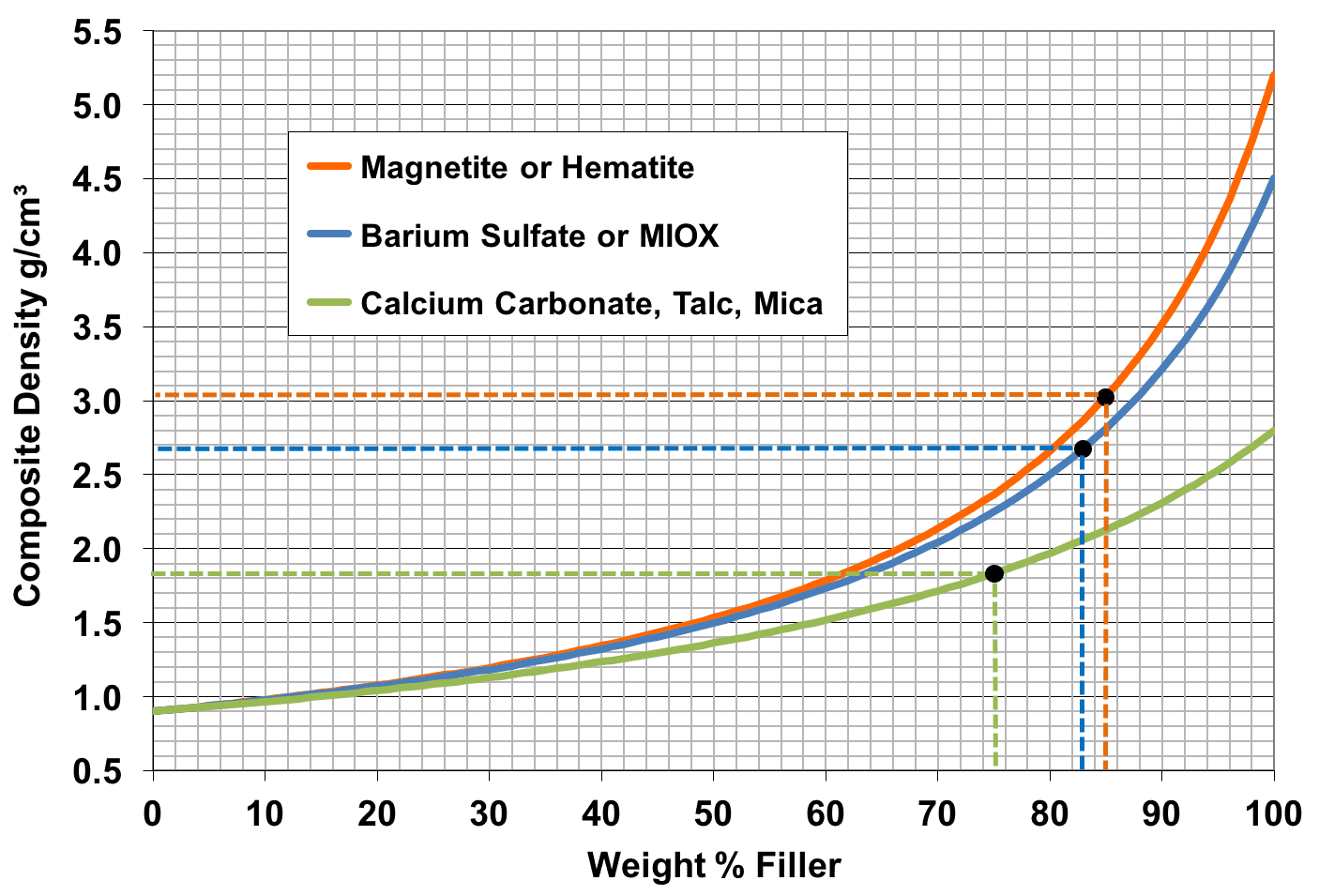Composite Density Calculator
Introduction
There are many cases where a formulator needs to hit a certain density target. For example, a company asked me to make them a golf grip formulation using fillers to increase the density to a value they specified. Most people mistakenly believe that it is possible to calculate the density of a composite by taking the weighted mean of the densities of the polymer and filler. That is not the case. A graph of composite density versus weight % filler is a curve (see diagram below), not a straight line and an equation is needed in order to calculate the correct density.
As an example take 50 weight % filler with a density of 3 and 50 weight % of polymer with a density of 1 g/ml. You would expect the density of the composite to be (3+1)/2 which comes out to 2 g/ml. The actual density of that composite is 1.5 g/ml. What went wrong? The density and other properties of composites all depend on the volume %, not the weight %.

Progress
In the past, I used an Excel spreadsheet I had made using my feeble abilities in that program. It worked but was clumsy. Now I have been very lucky to have the support of AnnaLytix, experts in data analysis, to put together an online calculator. The online composite density calculation tool includes preset values for most plastics and filler so you don’t even have to look them up. I hope you find it useful and I thank AnnaLytix for making this dream of mine come true (see AnnaLytix.com for information on their business intelligence and data analytics services).
The Calculator
Here is the tool allowing you to instantly see the density of any polymer and filler combination. If you have requests for materials to add then please contact us.
Notes
The tool calculates the expected density and it will usually give you the same value you find experimentally. However, there are exceptions. For example, if you trap bubbles into the compound during mixing, then the air will decrease the density you measure compared to the theoretical value you had calculated. The same applies if trapped moisture and sub-optimal venting lead to bubbles.
There are also instances when the actual measured density is higher than the predicted value. For example, some fillers, notably talc, act as nucleating agents. They may increase crystallinity in the polymer and because crystals are denser than the amorphous phase, the density of the composite will be fractionally higher than expected.
Of course, a deviation from the predicted density may simply mean that the filler and polymer were not dosed accurately so the weight % of filler is incorrect. That can be determined by ashing whereby the polymer is burnt away (e.g. in a TGA instrument) so you can determine the weight of filler left when the polymer has been removed.
All of these are good reasons to calculate the predicted density because it can give you clues as to what has gone wrong when you go to make your blend.